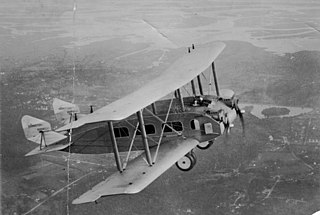
The CAP Aviation CAP-23x family is a family of aircraft designed for competition aerobatics. The CAP 230 airframe was a direct development of the CAP 21 competition single seater strengthened to cope with a 300 hp 6-cylinder Lycoming AEIO-540 engine instead of the 200 hp original 4-cylinder Lycoming AEIO-360.

The Burnelli CBY-3 Loadmaster is an unconventional transport aircraft that was designed by American engineer Vincent Burnelli and built in Canada in 1944 by Canadian Car and Foundry.

The Piaggio P.166 is a twin-engine pusher-type utility aircraft developed by the Italian aircraft manufacturer Piaggio Aero. The aircraft model name was Portofino, and is also known as Albatross in South African military service.

The Burnelli UB-14, also known as the Cunliffe-Owen Clyde Clipper, was a 1930s American prototype lifting-fuselage airliner designed and built by Vincent Burnelli.

The Curtiss Model 54 Tanager was an aircraft constructed in 1929 as Curtiss' entry in the Guggenheim Safe Aircraft Competition.

The Fieseler Fi 97 was a 1930s German four-seat cabin touring and competition monoplane aircraft designed and built by the German manufacturer Fieseler.

The Remos G3 Mirage and Remos GX are German high wing, two seat, single engine light aircraft, built by Remos AG of Pasewalk. The aircraft is supplied as a kit for amateur construction or complete and ready-to-fly.

The Horten H.III was a flying wing sailplane built by Walter and Reimar Horten in Germany from 1937 to 1944.

The Burnelli CB-16, also known as the Uppercu-Burnelli CB-300, was a passenger aircraft designed by the American company Burnelli in 1928. It was the first twin-engined aircraft to have retractable landing gear and the first to maintain altitude on only one out of two engines. Only one was built.

The Burnelli RB-1 was a US twin engine biplane airliner prototype from 1920, incorporating a lifting body fuselage.

The Eastman E-2 Sea Rover, also called the Beasley-Eastman E-2 Sea Rover, was a light seaplane built in the late 1920s for business and shuttle use.
The Lacey M-10 is an American homebuilt aircraft that was designed to use simple construction techniques.
The Anglin J6 Karatoo is an Australian ultralight and light-sport aircraft that was designed by Jessie Anglin and introduced in 1982. Over the years the J6 Karatoo has been produced by several different manufacturers, including Amax Engineering of Donvale, Victoria, Skyway Aircraft and is currently built by Serenity Aviation of Australia. The aircraft is supplied as plans or as a kit for amateur construction.
The Airtrike Eagle 5 is a German ultralight trike, that was designed and produced by Airtrike of Berlin. When it was in production the aircraft was supplied as a complete ready-to-fly-aircraft.
The PowerTrike Light is a German ultralight trike and powered parachute, designed and produced by PowerTrike of Mackenbach. The aircraft is supplied as a complete ready-to-fly-aircraft.
The SDB Karat is a Russian ultralight trike that was designed and produced by SDB of Moscow. The aircraft was supplied as a complete ready-to-fly-aircraft.
The Laron Wizard is an American homebuilt aircraft produced by Laron Aviation Tech of Borger, Texas. When it was available the aircraft was supplied as a kit for amateur construction.
The Progressive Aerodyne Stingray is an American homebuilt flying boat that was designed by and produced by Progressive Aerodyne of Orlando, Florida, introduced in the 1990s. When it was available the aircraft was supplied as a kit for amateur construction.
The V-STOL Super Solution 2000 is an American STOL homebuilt aircraft that was designed by Dick Turner and produced by V-STOL Aircraft Corporation of Fort Myers, Florida. When it was available the aircraft was supplied as a kit for amateur construction.
The V-STOL Pairadigm is an American twin-engine center-line thrust STOL homebuilt aircraft that was designed and produced by V-STOL Aircraft Corporation of Fort Myers, Florida, introduced in the late 1990s. When it was available the aircraft was supplied as a kit for amateur construction.











